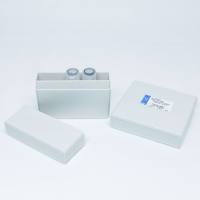Eighty years after its development, electron microscopy still represents the gold standard in terms of resolution. A major disadvantage is, however, the requirement for fixed specimens—especially in view of the numerous live fluorescence microscopy methods that have been developed during the last few decades. This drawback can be largely compensated by combining both microscopy techniques, live imaging and electron microscopy, by transforming a fluorescent signal into one that can be visualized in the electron microscope. This can be achieved by employing photooxidation. This procedure uses the production of reactive oxygen species by excited fluorescent dyes to oxidize the substrate diaminobenzidine, which in turn forms an electron-dense precipitate in the immediate proximity of the dye. In this chapter, we explain the photooxidation protocol in detail, focusing mainly on FM dyes as markers of membrane trafficking, especially in synaptic physiology. We also discuss the use of numerous other labels for photooxidation applications. We conclude that this approach is applicable to a wide variety of cellular targets and processes and therefore has a great potential in linking diffraction-limited light imaging to the high resolution of electron microscopy.






